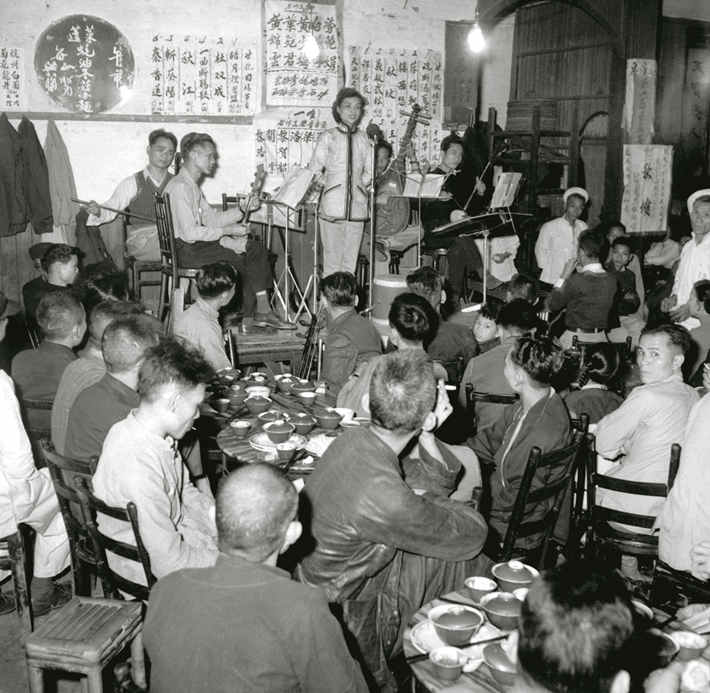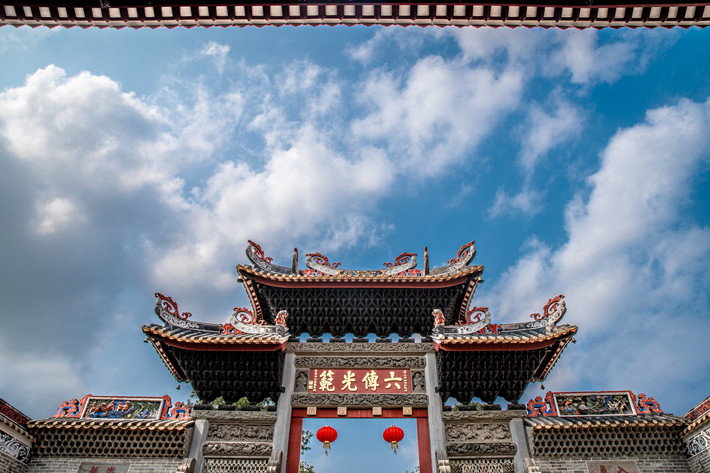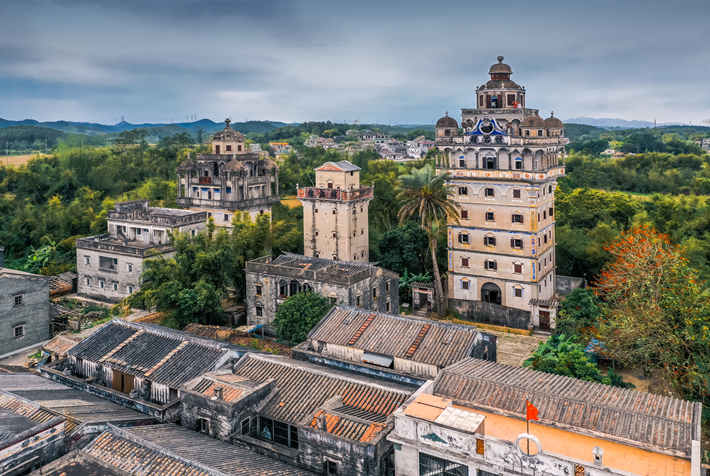Greater Bay Area: Lingering Nostalgia at Heart, Great Future in Sight

Guangdong Province and Hong Kong and Macao special administrative regions share the same cultural roots due to close proximity in history and geography. Anchored in Lingnan culture, these places are home to rich cultural heritages, which testify to long respective histories curved across one continuous line as the Greater Bay Area has prospered in culture.
“Cantonese Opera People are Family.”
The scenes of Cantonese Opera performances are etched in the memories of several generations from the Greater Bay Area: They would take stools from home to go out early before the performance and enjoy the beats of gongs, drums and clappers as they eagerly awaited the curtain up of a Cantonese Opera performance.
Cantonese Opera first gained its widespread popularity in the Pearl River Delta in Guangdong Province. By the end of 19th Century, many practitioners of Cantonese Opera relocated to Hong Kong and Macao to make a better living. In the olden days, Cantonese Opera in Hong Kong and Macao was mostly performed in tents set up just for the occasion and was a must-have at festivals and ceremonies. Around 1920, Cantonese Opera troupes shuttling between Guangdong, Hong Kong, and Macao emerged, and some of the bigger ones have been quite active. In the days before the prevalence film and television, opera was an interest and entertainment shared by people in the three regions.
In 2009, Guangdong, Hong Kong and Macao jointly applied for Cantonese Opera to be inscribed on the UNESCO Representative List of Intangible Cultural Heritage of Humanity. “All people under heaven involved in Cantonese Opera are family,” said Ni Huiying, a renowned Cantonese opera artist who has graced the stage for more than 50 years. “Our hearts are never far from each other.”

Today, the Guangzhou-based Cantonese Opera Art Museum is situated on a quaint street in Yongqing Fang, a historical area in town. This museum, sated with features of Lingnan culture and gifted a breathtaking view, has attracted abundant Cantonese Opera fans.
On April 19, 2021, the launch ceremony for a Cantonese Opera exchange activity across the Greater Bay Area and the third global micro video contest on Cantonese Opera creation was held at the museum. Traditional theater costumes, face makeup of various characters, and unique Lingnan-style singing took spectators’ breath away. A genre of traditional Chinese opera, Cantonese Opera performed in Guangdong Province usually integrates the singing skills of other genres. Cantonese opera performed in Hong Kong and Macao keeps the essence of tradition while adopting ancient and modern techniques from both China and beyond. During the event, many young Cantonese Opera actors also ventured onto the stage. They shared innovations on some of the classic repertoire through adding trendy and popular elements. Such performances tend to give the time-old opera new glamor.
Alongside Cantonese Opera, the cultural calling card of the Greater Bay Area, many other cultural symbols also connect the three regions today. Aromatic herbal tea is an everyday drink for people in the three regions. Lion dance performances to pray for blessings are never absent from festivals and big events. And thrilling dragon boat races for Dragon Boat Festival are always among the most loved traditional folk activities. A culture with the same roots and origins now bonds Guangdong, Hong Kong and Macao closely and continues to thrive.
“Visit Macao for a real Xiguan Mansion.”
Grey brick houses, stone streets, caldron-handle-shaped walls, carved eaves… Everything in the winding alleys of the Lingnan Tiandi area in Foshan City causes people to slow their walking. Sunshine pouring through Bauhinia leaves creates a sort of illusion of walking into an ink-and-wash painting of Lingnan scenery.
The Lingnan Tiandi area is located opposite Foshan Ancestral Temple. The area was previously named Donghuali, also known as ‘number one street in Foshan.’ It is home to the best preserved streets of the Qing Dynasty (1644-1911) lined up with Jian’s Villas, Wenhuili Marriage House, Huang Yuanji Ancestral Temple, and Li Chung Shing Tong Ancestral Shop. It is home to 22 sites with cultural relics, 128 historical buildings, and eight old streets and alleys.
“The whole area was dilapidated before it was renovated, and many historical buildings were even in danger,” said Zhong Chong, chief planner of the Chancheng branch of the Foshan Bureau of Natural Resources.
In 2008, Foshan began renovating the Donghuali area to restore its traditional style. Alongside cautious repair of cultural relics, transformation of the whole area kept loyal to the original style and used traditional materials. For instance, old bricks and tiles removed from ramshackle houses were mostly recycled and reused.

The Lingnan Tiandi area in Foshan, home to the best preserved streets of the Qing Dynasty (1644-1911), is becoming revitalized with independent brands and creative shops moving in. by Wang Weijia
Lingnan Tiandi managed to maintain its former landscape even with the width of streets and distance between houses unchanged. Buildings with Lingnan characteristics largely remain, and the traditional appearance of the entire area has been preserved. As a result, memories of the past have survived. Fashionable elements also began to emerge in the area as independent brands and creative shops moved in one after another, which made the entire place more vigorous.
Traditional architecture houses the history and memories of a city. Lingnan architecture has always been inclusive and accepting of traits of other cultures. For instance, some caldron-handle-shaped walls resemble ancient official hats, which symbolize fortune in a political career. The tianjing—an enclosed courtyard in the middle of a residential compound –helps light up the rooms and create different views throughout the house.
Lingnan architecture is also designed for practical use according to geographic location and climate. It tends to be loosely-structured and light-colored, well ventilated and well lit. Western elements employed by Lingnan architecture such as watch towers and arcade buildings create a next-level fusion of styles.
In the Guangdong-Hong Kong-Macao Bay Area, historical architecture preserves the traditional Lingnan culture and cultural nostalgia commonly found in the region. Major efforts have been made to preserve and restore historical streets and buildings in an endeavor to protect the cultural roots of Lingnan. Tang Guohua, president of the Institute of Lingnan Architecture with Guangzhou University, suggested that preserving and reviving historical Lingnan architecture protects the cultural roots and memories of the bay area.

The Blue House Cluster in Hong Kong’s Wan Chai area is typical Lingnan architecture. Such arcade buildings are rarely found in Hong Kong anymore. Restoration of the Blue House Cluster, which started in 2006, won the UNESCO Asia-Pacific Award of Excellence for Cultural Heritage Conservation in 2017, the highest of its kind and also the first Hong Kong-based project to be so honored.
“The Blue House Cluster preserves the Chinese tenement style from the 1920s to 1980s, which is similar to “bamboo tube houses” on Enning Road in Guangzhou,” said Tang. “It demonstrates combined usage of Chinese and Western elements and testifies to an era when Chinese and foreigners resided together.” Tang believes that signature buildings like these in Hong Kong and Macao have inherited the essence of Lingnan culture. “The external walls, wooden staircases, and iron balcony bars have all become identifying marks of the Wan Chai area.”
Macao has also prioritized preserving its old town. The Mandarin’s House and the Lou Kau Mansion, both constructed in the late Qing dynasty, are a part of Historic Centre of Macao, which is inscribed in the World Heritage list. These mansions are the best-preserved Xiguan Mansion, a typical residential house of Lingnan style, in terms of both shape and structure.
“So well-preserved Xiguan Mansions with its Lingnan-style gardens are hard to find nowadays even in Guangzhou,” Tang said. “To get a real taste of the Xiguan Mansion, you have to go to Macao.”
Homeland Loyalty
Adjacent to the sea and heavily influenced by maritime civilization, the Greater Bay Area fosters daring, open, tolerant, and enterprising locals. The region has been linking foreign economies since the Tang (618-907) and Song Dynasties (960-1279). During the Qing Dynasty (1636-1912), it functioned as China’s only window to the world. It was also the cradle of the modern revolution and a forefront pioneer of China’s reform and opening up.
Jiangmen Wuyi Museum of Overseas Chinese features displays such as wrinkled passports and transaction receipts that shine light on the lives and hardships that those from Wuyi (five counties) of Jiangmen endured while making a living abroad and their abiding love for their homeland and country.
Intense economic pressure pushed many from the “five counties” to go abroad to make a living in the mid-19th Century. After securing their livelihood in a foreign country, emigrants spared no effort to support the development of their hometown and the motherland.
The 1,800 Kaiping Diaolou (multi-storied defensive village compounds) scattered across Jiangmen evidence their successes. These Diaolou integrate western-style balconies, arches, open corridors, and pediments and combine ancient Greek, Roman and Muslim architectural styles with the traditional style of Lingnan architectures. In southwestern Jiangmen, Diaolou are scattered in every direction. Whether a lingering pair of watchtowers or dozens in a single village, these structures had a bird’s eye view of Jiangmen’s political, economic and cultural development. They capture the history of overseas Chinese people struggling to protect their families and defend their country. In 2007, UNESCO designated the Kaiping Diaolou and Villages a World Heritage Site as a living museum of modern architecture in uniquely artistic counties.

Kaiping Diaolou in Jiangmen, Guangdong Province, is a living architecture museum witnessing the polical, economic and social development of the city. Visual People
Today, Jiangmen represents roots for approximately four million Chinese people living overseas in 107 countries and regions throughout the world. According to incomplete statistics, over 20 percent of Hong Kong citizens are originally from the “five counties.” A saying in Macao estimates “one Jiangmen for every three Macanese.”
Professor Liu Jin, President of the Guangdong Qiaoxiang Cultural Research Center at Wuyi University, pointed out that since modern times, Hong Kong and Macao have been important hub cities for overseas Chinese from the “five counties” and important regions for them to make a living. Jiangmen buildings represent a fusion of Chinese and Western architectural styles resulting from painstaking efforts of Hong Kong and Macao compatriots. The people of the Jiangmen have also contributed greatly to the prosperity and development of Hong Kong and Macao.
The recent development of the Greater Bay area has enabled more and more people to shuttle around the area for work, study and leisure. Their daring, open, tolerant, and enterprising spirit lives on, ceaselessly injecting vitality into the region.